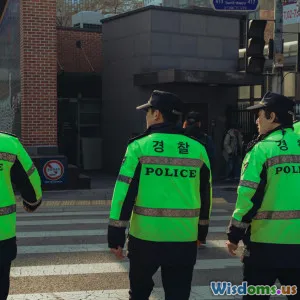
Can Urban Farming Save Our Cities?
8 min read Explore how urban farming can transform city landscapes, boost sustainability, and address food security challenges worldwide. (0 Reviews)
Can Urban Farming Save Our Cities?
Cities are the heartbeat of modern society — chaotic, vibrant, and ever-expanding. Yet, they face increasingly severe challenges: food insecurity, environmental degradation, limited green spaces, and overburdened infrastructure. Could the answer to these pressing urban dilemmas lie in a simple but transformative concept — urban farming? This article delves into how cultivating food within city limits offers innovative pathways to revitalizing urban communities and safeguarding the environment.
The Urban Farming Revolution: What Is It?
Urban farming encompasses growing, processing, and distributing food in urban areas. It often includes rooftop gardens, vertical farms, community plots, and even indoor hydroponic systems. Unlike traditional agriculture located in rural areas, urban farming leverages untapped spaces within cities to grow food closer to consumers.
Why Urban Farming Matters
The United Nations projects that 68% of the world population will live in cities by 2050. With this heightening urbanization comes a ballooning demand for fresh, affordable, and sustainable food. Importing produce from rural farms to cities demands significant fossil fuel consumption, contributing to greenhouse gas emissions and greater food waste.
Urban farming reduces the "food miles" — the distance food travels from farm to plate — thereby lowering carbon footprints. According to a study by the Rodale Institute, urban farms can cut transportation and food waste-related emissions by up to 40%. Furthermore, they can empower local communities with job opportunities and healthy food access.
Addressing Food Security in Concrete Jungles
Food deserts—urban areas with limited access to fresh produce—plague many cities worldwide. In the United States alone, over 23 million people live in these food-insecure zones. Urban agriculture initiatives tackle this issue head-on by bringing fresh vegetables and fruits directly into neighborhoods where supermarkets may be absent.
Case Study: Detroit's Urban Agriculture Boom
Detroit, Michigan, faced major economic decline, with vacant lots sprawling all over the city. However, this crisis seeded a solution. Over 1,400 urban farms and community gardens have sprouted in the city, turning abandoned spaces into green oases that nurture residents both physically and socially.
Detroit Urban Farms, an innovative organization, has sold over 200,000 pounds of produce locally while creating employment for many youth. Such projects demonstrate urban farming’s capacity to combat food insecurity and drive neighborhood revitalization simultaneously.
Environmental Benefits: Greening the Grey
Urban farms do much more than growing food. They help mitigate urban heat islands—a phenomenon where cities become excessively warm due to concrete and asphalt absorption. By introducing vegetation, urban farming helps reduce temperatures, improving urban livability.
Moreover, it contributes to better air quality by filtering pollutants and releasing oxygen. Soil in these farms enhances stormwater management, decreasing urban flooding risks. Studies indicate that urban agriculture improves biodiversity by providing habitats for pollinators like bees and butterflies, essential for ecosystem health.
Innovations Making Urban Farming Scalable and Efficient
While traditional soil-based farming is possible, urban farming has embraced technological advancements:
- Vertical Farming: Utilizing vertical space within buildings or shipping containers to grow crops, dramatically increasing yield per square foot.
- Hydroponics and Aeroponics: Soil-less growing techniques that use nutrient-rich water or mist. This reduces water usage by up to 90% compared to conventional farming.
- Smart Systems: Automated climate control, LED lighting, and data analytics optimize growing conditions. For instance, Plenty, a vertical farming startup, uses AI to boost productivity in indoor farms.
Japanese company Spread operates a fully automated vertical farm producing thousands of heads of lettuce daily with minimal labor and pesticides. These advances enable urban farming to scale up rapidly, making it viable for major cities worldwide.
Social Impact: Building Community and Education
Urban farming fosters social cohesion by bringing together diverse groups to collaborate on food production. Community gardens become vibrant hubs where neighbors share knowledge, skills, and harvests, promoting food literacy and healthier diets.
Programs such as New York’s GreenThumb support over 550 community gardens, many located in economically disadvantaged areas. These initiatives offer educational opportunities for children to learn about ecology, nutrition, and sustainability firsthand.
Dr. Farm, a community farm project in South Korea, connects migrant workers and locals, nurturing social bonds and cultural exchange through shared gardening activities.
Challenges and Considerations
Despite its benefits, urban farming faces hurdles. Zoning laws and land use policies may restrict growing activities. The availability of suitable land, potential soil contamination from urban pollutants, and funding constraints pose significant challenges.
Additionally, urban farming alone cannot replace large-scale agriculture but must be part of a diversified food system. Some critics caution against overhyping urban farming’s ability to supply entire cities, emphasizing the need for integration with regional food networks.
Moving Forward: How Can Cities Support Urban Farming?
To unleash urban farming’s potential, municipalities need to:
- Adjust regulations to facilitate farming on rooftops, vacant lots, and building walls.
- Provide financial incentives, grants, or land leases to urban farmers.
- Invest in education programs and infrastructure.
- Encourage partnerships between government, nonprofits, and private sector innovators.
Cities like Singapore have incorporated policies supporting urban farms, resulting in over 10% of the country's vegetable consumption produced locally despite limited land resources.
Conclusion: A Sustainable Path to Urban Resilience
Urban farming is more than a trend—it's a multifaceted solution addressing food insecurity, environmental concerns, and social inequalities in cities. By growing food locally, cities reduce carbon footprints, reclaim unused spaces, and empower communities.
Though not a panacea, urban farming’s synergy with technology, policy reforms, and community engagement can transform urban living. As we envision more sustainable, resilient cities, integrating urban agriculture offers hope and practical means to nourish urban populations and rejuvenate concrete jungles worldwide.
"Urban farming reconnects us to nature, our communities, and the simple yet profound act of growing food." — Janine Benyus, sustainability expert
If your city doesn’t have an urban farm yet, perhaps it’s time to plant the seed and watch your community flourish.
Rate the Post
User Reviews
Popular Posts





















